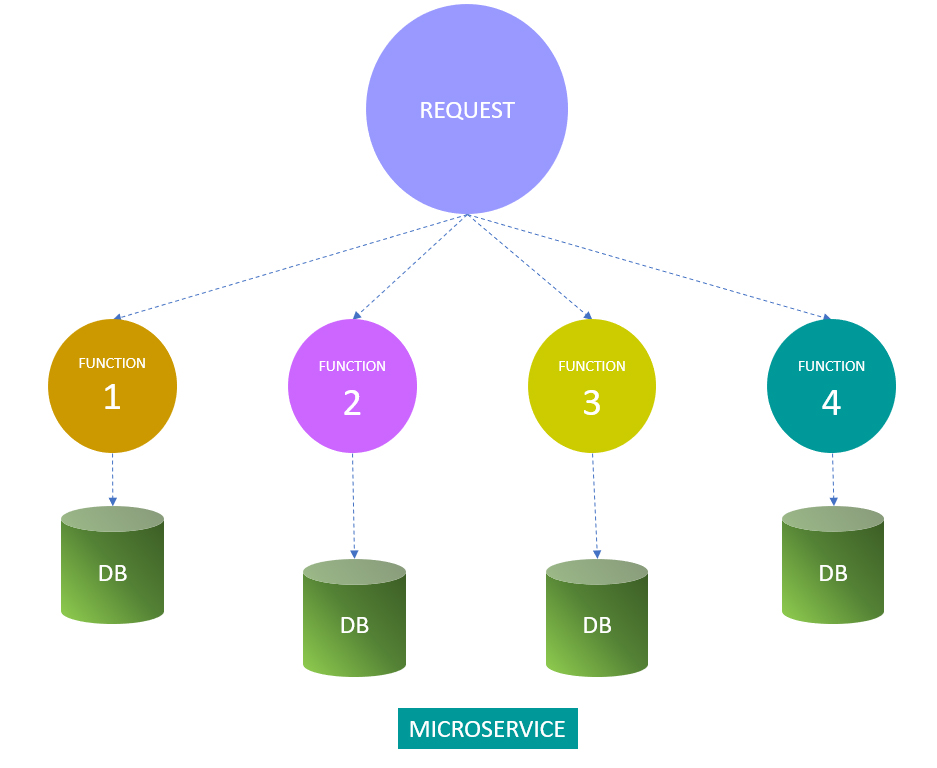Introduction
For pure frontend developers who doesn’t have much exposure to backend or middleware technology, microservices are a vague thing. They might have high-level introduction. So, let us have some deep understanding of what microservices are, and how it is different from monolithic application data management.
Monolithic and Microservice
In a monolithic application, all the stakeholders like all the business logic, routing features, middle-wares and Database access code get used to implement all the functionalities of the application. It is basically a single unit application. It has a lot of challenges in terms of scalability and agility. On the other side, in a microservice, all the business logic, routing features, middle-wares, and database access code get used to implement a single functionality of the application. We break down the functionalities to the core level and then connect to related services. So, the functionalities are actually dependent on related services only and does not get affected if there is an issue with other services. This helps to make the application agile, flexible, and highly scalable.


Why Microservices
Independent DB for the Services
The very first important thing associated with microservices is that each functionality requires its own database and never connects to the database of other services. In a monolithic service, since you have a single database. if something goes wrong with it then the whole application gets crashed. But in microservice, since we have an independent database for each service, in case of any problem with any particular database, it certainly does not affect other services and your application does not crash as a whole.
No Dependency on Schema
We have many services in our application and each service requires its own database. Hence, each database has its own schema or structure. But, if any service is connected to other service and shares the data and during development, the source database changes its schema and does not update the dependent services, then the service will not function correctly and may crash. So, there should be no dependency on databases.
Performance
Depending on the nature of service, we choose the appropriate type of DB. Some services are more efficient in specific database. So, creating a single database for all the services in the application might affect performance. In Microservice, since we have individual DB for each of the service, it is quite flexible, independent, and functions efficiently.
Data Management
Unlike the monolithic approach, in microservice, each functionality or service connects to its own database and never gets connected to other database. So, the big question arises of how we communicate between two services. It is quite generic in an application that we require to get some information based on the combination of many service outputs. But as a thumb rule, services dont communicate. Then what is the solution to this issue? Let us see, how data communicates between the services.
#data management #monolith vs microservice #microservices benefits #microservices communication #microservices archiecture
